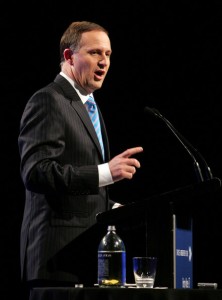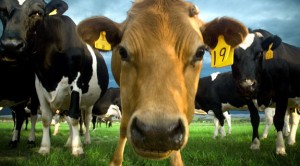
Dear Don...
New ACT leader Don Brash’s highly publicised letter of resignation to National leader and Prime Minister John Key made a lot of headlines last week when it was ‘leaked’ to the media. However, a ‘leaked’ copy of John Key’s reply to Dr Brash makes for interesting reading…
Hon Don Brash
ACT Party Leader
C/- Not in Parliament Buildings (until after Nov 26 2011)
The ACT Party Bunker
Epsom
Auckland
Dear Don,
It was with a very heavy heart that I received your letter of 12 May 2011, resigning your membership of the National Party to take over the leadership of the ACT Party.
Funny, how you only sent this letter to me – and publicly released it on May 12 – after actually officially securing the ACT Party leadership on April 30.
It seems, Don, you can’t commit to anything long-term – just ask Mrs Brash no.1 and no. 2 – so no surprises on that front.You also express mounting dismay at the performance of my Government and mention your ambition to staunch the flow of our best young minds to more successful countries.
Again Don, somewhat ironic. How can you bang on about keeping the best young minds when you and your fellow septuagenarian Roger Douglas have just purged the ACT of the relatively young at heart Rodney Hide as leader?
In your letter, you pose a number of questions. Let me try and answer these.
Why are you continuing Labour’s wasteful spending?
You ask why we have not wound back on the Clark Government’s squandering of our people’s hard-earned resources, specifically:
- The waiving of interest on student loans;
- Tightening up Working for Families;
- Cost of KiwiSaver subsidies;
- Subsidising doctors’ visits for higher earners;
Simple answer Don – votes. As a former banker (and not with a silent w) Don, I thought you would be able to count. The fact is the policies you and ACT promote garner between 1-5% support, while my Government is sitting on an average of about 48%.
Do the math, Donny boy!
Why are you stopping young people from working?
You also claim that in Opposition National opposed getting rid of the minimum youth wage, but in Government voted against a bill to bring back youth rates. You accuse me of depriving another 12,000 young people of the chance to get a foot on the job ladder.
Don, that is not fair. National is an equal opportunities party and you will find that under our watch it is not just young people who have lost their jobs, but people of all ages, races, colours and creeds.
Why did you change your position so completely on the Emissions Trading Scheme?
You also claim that in Opposition both you and I hammered Labour for seeking to be world leaders in combating greenhouse gas emissions. We argued on behalf of our farmers – the lifeblood of this nation – that instead we should be fast followers.
Don, my position on the ETS has always been flexible – depending what our latest polling information says. Meanwhile, I suggest the introduction of the ETS shows I am being a fast follower on this issue and fast following what the polls say.
Votes, Don, votes – that is what it is all about.
Why are you ignoring reality on superannuation?
You say how you’ve argued for the need to raise the age of eligibility for New Zealand Superannuation, so that it will still be there when people need it.
Good on you Don. You are definitely walking the talk. By knifing Rodney and taking over the leadership of ACT at the age 70 shows that you are far from retiring – or shy!
You also criticise my promise to resign as Prime Minister rather than put up the pension age, claiming this is irresponsible and what New Zealand First voters voted for not National voters.
Is there any truth to the rumours Don that both you and Roger Douglas will be doing the rounds of the nation’s rest homes, in the lead up to the election, canvassing the youth vote for ACT? I am not sure Winston Peters will not be too happy with you invading his turf and trying to surf the silver Tsunami to electoral victory!
Why are you widening, not closing, the Transtasman wage gap?
Your letter also says that you have grave concerns about the widening wage gap between New Zealand and Australia.
There is an easy answer to this problem Don. Just jump on a plane – along with thousands of other Kiwis who bugger off each month to the lucky country – and this gap will be gone (by lunchtime, no less!).
Finally, you sign off your turgid, bile-ridden rant with the claim: “Nobody voted for that – certainly not National voters”.
Sorry Don, but I think it is more correct to say: “Nobody voted for ACT”. Or at least bugger all did, and I don’t fancy your chances – especially with the extremist polices you are now espousing – of gaining many more votes this year.
Up yours, Don
John
PS I look forward to our coalition negotiations later on in the year.









